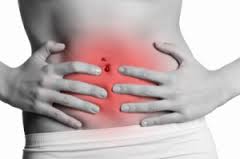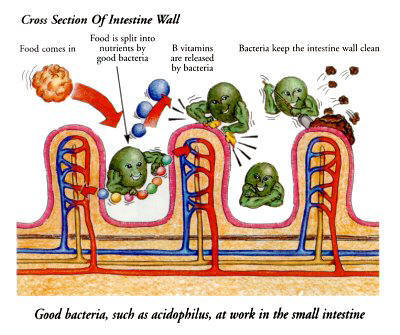
By Dr. Justin Marchegiani
We are hearing the term leaky gut a lot these days, but what exactly is it and how do we heal it?
When we hear the word “leaky” associated with anything, we know that can’t be good, and a leaky gut is no exception. Just as a pipe gets holes and leaks water, causing damage to everything around it, the gut can get holes and leak toxic intestinal contents, causing damage to other parts of the body.
This article provides a five step strategy for healing a leaky gut and preventing a leak gut in the future.
To understand how to heal it, we first have to understand what a leaky gut is.
The intestinal lining contains layers of cells connected by tight junctions. The intestinal lining is supposed to only allow the appropriate nutrients to pass through and into the bloodstream. When the tight junctions become inflamed due to gluten or other irritating foods or even infection, they can open up, and food particles can slip through, introducing toxic materials, such as yeast, bacteria, and parasites, into the bloodstream.
The bloodstream carries these toxins throughout our body where they are absorbed in a variety of locations, creating inflammation. As we continue to feed our bodies offending foods, the leaky-gut cycle continues, keeping our bodies in a constant state of inflammation.
Leaky gut can present itself in a variety of ways and can lead to chronic conditions. Some people may have irritable bowel syndrome (IBS), Crohn's disease, or other pathological conditions. Others may have skin issues, bloating and gas, or gastroesophageal reflux disease (GERD). Still others may fall somewhere in the middle.
All of these conditions have a common etiology: leaky gut. So we have to get the gut healed.
Click here if you are wondering if your chronic health issues might be due to a leaky gut.

The first step is to remove irritating foods causing the leaky gut. Physical, chemical, and emotional stressors can lead to inflammation, and inflammation tends to cause our bodies to break down faster. Irritating, hyperallergenic foods introduce physical and chemical stressors to the body.
Stressors cause the immunoglobulin A (IgA) in the mucosal barrier in our gut lining to break down. When this happens, we may see sinus infections, gut issues, irritation, fungal infections, or even urinary tract infections. Removing irritating foods can help remove this stress to the gut.
What foods to remove varies by individual. Common irritating foods include, but are not limited to, the following:
If there is an autoimmune issue as well, we may need to add a rotation component to the diet and also eliminate foods that include the following:
Again, there’s not a one-size-fits-all plan here. Each person has to find his or her offending food and eliminate it.
Since 70% to 80% of our immune system is located in our gut, removing allergenic foods is very important to keeping the body healthy.
When our body is under the control of the sympathetic nervous system (SNS), it’s in a fight-or-flight state. As we get more stressed, our blood rushes toward the extremities so we can fight or flight. As blood leaves our digestive system, we are not able to produce the enzymes, hydrochloric acid (HCl), and bile salts we need for proper digestion. This makes the environment more susceptible to dysbiosis, small intestinal bacterial overgrowth (SIBO), and chronic infections.
Our parasympathetic nervous system (PNS) is our “rest and digest” state. The PNS actually brings the blood inward toward the gut, and this allows for proper enzyme, HCl, and bile salt production. So getting our bodies back under the control of the PNS is important.
There are specific healing nutrients that will help repair the gut. What nutrients, how much, and whether or not they are needed will depend on the specific gut issue, how long it has existed, and if there is inflammation. L-glutamine, slippery elm, marshmallow root extract, aloe vera, and licorice are soothing and will assist with healing the gut.
Having healthy adrenal glands also is very important for healing the gut.
The adrenals produce cortisol, which helps neutralize inflammation and maintain a healthy gut lining. If we have too much cortisol—if we’re too inflamed, and our body’s inflammatory response is too high—we’ll actually break down our gut lining. If our cortisol function is too low, we won’t have enough of it to build our gut back up.
So having an appropriate stress response, having healthy adrenal function is important to creating the right hormonal response, to having healthy levels of cortisol. Cortisol is also there to help deal with inflammation, so if we have inflammatory compounds in the gut, cortisol can also put out that flame before it grows into a five-alarm fire.
Removing infections is imperative, and this step is often missed in traditional medicine. Infections can drive a leaky gut, keeping us in a stressed-out state, which keeps the SNS activated, preventing digestion.
Blood work or a comprehensive stool analysis needs to be done to determine if there is an infection (SIBO, dysbiosis, bacteria, virus, etc.) and what infection we are dealing with.
There is a reason removing infections is near the bottom our list of strategies: it can actually be stressful to your detoxification system and immune system to remove an infection. Also, in some people the hormonal system (adrenals, thyroid, and male or female hormones) must be addressed first to decrease the risk of side effects and other issues.
Imagine you have a backyard garden full of weeds. You can't plant new seeds in that weedy garden. There’s not enough room for those seeds to grow. You’re going to have to pull out the weeds and prepare the soil before you can plant your new seeds.
In our first four strategies, we removed all the weeds (the bad stuff) and prepared the soil (our gut). Now we can reseed (reinoculate)—put the good bacteria back in.
 Many people have issues with adding in probiotics. These issues occur when they are trying to plant seeds in a garden that’s full of weeds. Get the first four strategies in check first, and then introduce probiotics into your properly prepared gut.
Many people have issues with adding in probiotics. These issues occur when they are trying to plant seeds in a garden that’s full of weeds. Get the first four strategies in check first, and then introduce probiotics into your properly prepared gut.
It's important to ensure infection are cleared after treatment. Some patient may have other new infections that would burrowed deeper into the gut lining that will be exposed on retest. Some patient may need a few rounds of clearing herbs to clear them. Some patient may also get reinfected from a spouse or partner who maybe carrying an infection symptomatically (like in h. pylori).
Following the five strategies presented here may not be simple, but leaky gut is not a simple condition. Taking the challenge and putting forth the time and effort to heal your gut will be worth it when you see the drastic improvements in your overall health.
References:
“4 Steps to Heal Leaky Gut and Autoimmune Disease.” Dr. Axe Food Is Medicine. http://draxe.com/4-steps-to-heal-leaky-gut-and-autoimmune-disease/: accessed 6/12/15.
Reasoner, Jordan. “Leaky Gut Syndrome in Plain English-and How to Fix It.” SCD Lifestyle. http://scdlifestyle.com/2010/03/the-scd-diet-and-leaky-gut-syndrome/: accessed 6/12/15.
Leaky Gut image from www.leakygutcure.com.